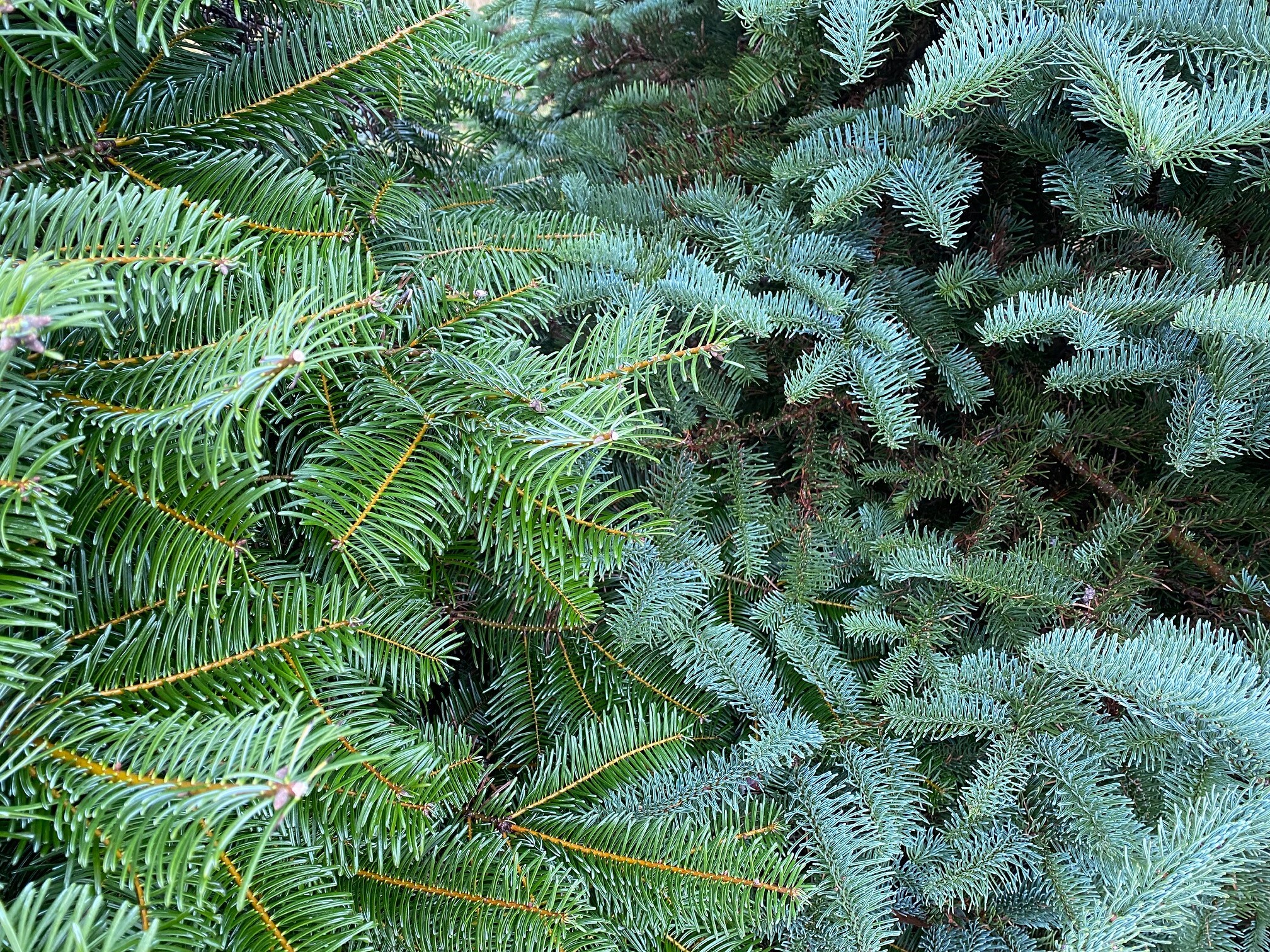The holiday season is upon us and for many that means choosing a Christmas tree. Whether you’re cutting your own, heading to the lot or choosing a live tree, there’s a lot to be learned by a hike in one of Oregon’s many natural areas.
Hit the trail – ask friends for a good hike or look into one of the many books on hiking areas in Oregon. Gather a group and take a walk to see what you can discover. Make it fun by challenging everyone to find each of the most common Christmas trees: Douglas-fir, noble fir and grand fir. In Oregon State University Extension Service’s “Trees to Know in Oregon and Washington” by Ed Jensen, professor emeritus in the College of Forestry, you’ll find descriptions of each tree that will help you identify them.
“The stories include identifying characteristics and ecology, natural history and cultural uses, and regions and locations where each tree can be found,” Jensen said.
The simple identification key for conifers easily separates Douglas-fir – our most common Christmas tree – from the true firs (like noble, grand, white and subalpine), as well as numerous other native conifers. The book can also be used on tree farms and in lots, but each of these locations commonly includes species not native to the Northwest – especially Nordmann and Turkish firs – that aren’t found in Trees to Know.
Sometimes, native pines – especially sugar or western white – and even native spruces like Sitka and Englemann are used, according to Jensen, who took most of the photos in the book. The creative person could also use others like coast redwood or one of the hemlocks.
If going to cut down a tree in the wild, go to the U.S. Department of Forestry for a permit. Oregon doesn’t allow tree-cutting in state forests. Acceptable forests are listed on the federal website. Having the book in hand while you’re looking for a tree can help you identify which tree you’re getting as you traipse through the forest Jensen’s book describes more than 125 trees, each illustrated with several photos, as well as keys that winnow down the genus (plant group). Jensen provides written identification and tells stories about each tree, including, uses, history and plant characteristics.
The new edition marks the book’s 70th anniversary. Outdoor enthusiasts, gardeners and people new to the Northwest will appreciate the easy-to-read style of the book, which is small enough to be carried on hikes around Oregon and Washington. The book is available for purchase in the OSU Extension catalog.
Once you decide on your favorite tree to display, here are some tips for choosing and caring for it once you have it home:
- To tell if a tree is fresh, look at the base to see if the needles are firmly attached.
- Avoid trees if needles are dry and break off easily, which means they are not fresh.
- Branches should be flexible. Shake a branch to see if it moves easily. Check the smallest branches, which dry out first.
- If it’s been more than a few hours since you cut the tree, cut a little slice off the base to allow water to enter the trunk and provide the tree with sufficient water throughout the holidays. If it will be a few days since you brought the tree home, slice off the base and keep it in a bucket of water to keep it fresh.
- Use a tree stand that’s appropriate for the size of the tree.
- It’s very important to keep your tree watered. Don’t let it dry out or it will start to lose needles. Don’t add anything to the water.
- Some trees will last longer than others. Nordmann, Turkish and Noble can last all of December if kept watered. Douglas-fir, which are less expensive and have a distinctive holiday scent, don’t last as long,
- Don’t put the tree near any heat source.
-30-
About OSU Extension: The Oregon State University Extension Service shares research-based knowledge with people and communities in Oregon’s 36 counties and the Confederated Tribes of Warm Springs. OSU Extension addresses issues that matter to urban and rural Oregonians. OSU Extension’s partnerships and programs contribute to a healthy, prosperous and sustainable future for Oregon.

